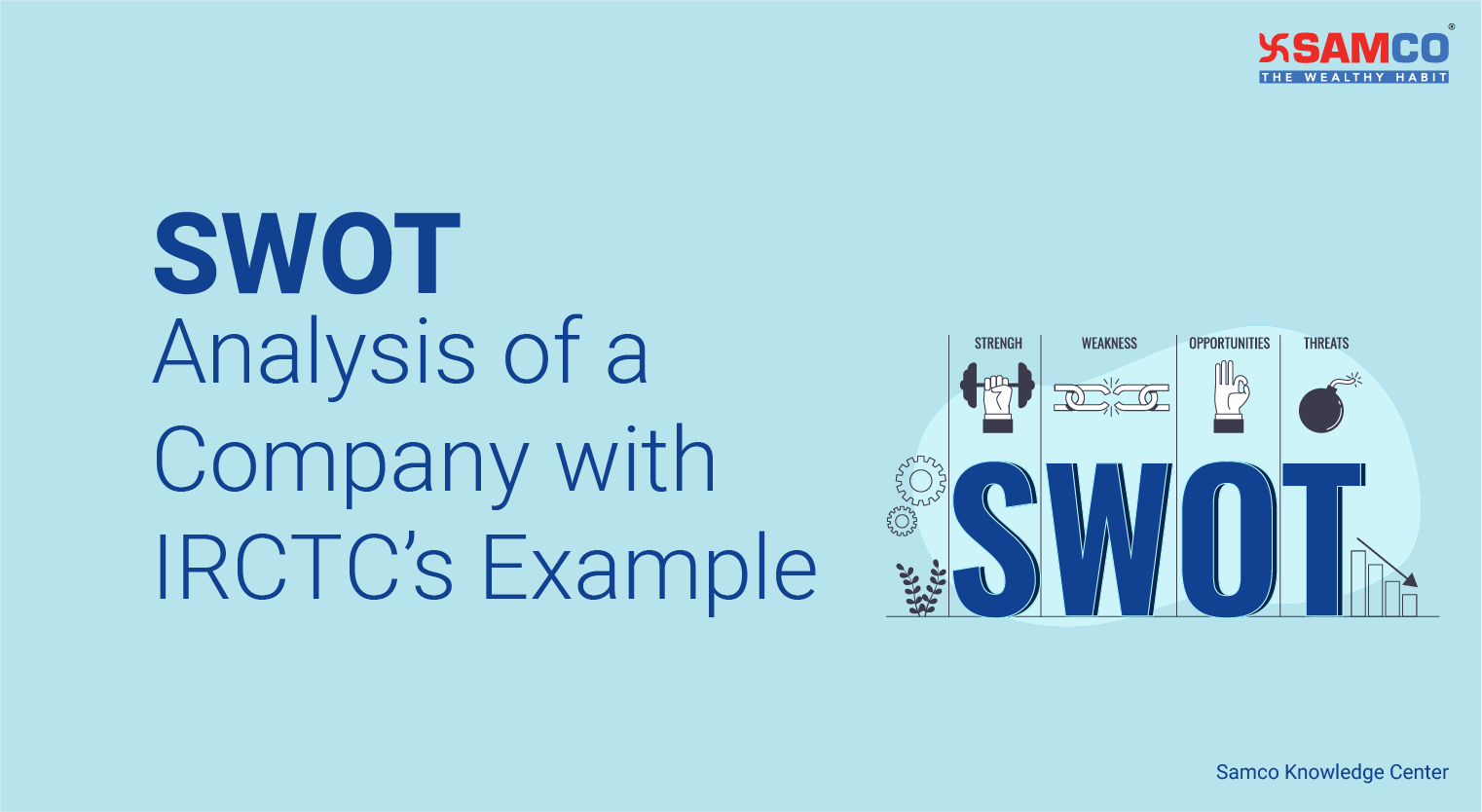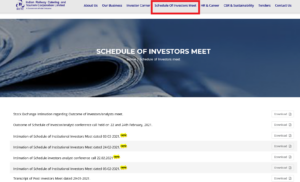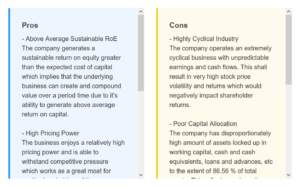 Investing in a company just because they are earning profits is a bad idea. In our previous article, we learned about Warren Buffett’s investment strategy. We understood that analysing financial statements is not enough.
To make a better decision, we need to check qualitative aspects too. There are various tools to do this. One such method is to conduct a SWOT analysis of the company before investing.
SWOT stands for strengths, weaknesses, opportunities, and threats. It is also referred to as a SWOT matrix. It is a strategic planning technique. It can be done for an industry, company, place, or person.
The best way to begin SWOT analysis is by asking questions. In this article, we will learn how to analyse a company using SWOT analysis. We will be taking the example of the Indian Railway Catering and Tourism Corporation's (IRCTC).
Investing in a company just because they are earning profits is a bad idea. In our previous article, we learned about Warren Buffett’s investment strategy. We understood that analysing financial statements is not enough.
To make a better decision, we need to check qualitative aspects too. There are various tools to do this. One such method is to conduct a SWOT analysis of the company before investing.
SWOT stands for strengths, weaknesses, opportunities, and threats. It is also referred to as a SWOT matrix. It is a strategic planning technique. It can be done for an industry, company, place, or person.
The best way to begin SWOT analysis is by asking questions. In this article, we will learn how to analyse a company using SWOT analysis. We will be taking the example of the Indian Railway Catering and Tourism Corporation's (IRCTC).
| In this article: 1. How to analyse the strengths of a company 2. How to analyse the weaknesses of a company 3. How to analyse the opportunities of a company 4. How to analyse the threats of a company |
- Internal factors
- External factors
Internal Factors :
Internal factors are the strengths and weaknesses of the company. Strengths are the qualities of a company that gives them a competitive advantage. Weaknesses are what the company needs to subdue to improve its performance. These are the characteristics that occur within the company. Example: company's operating efficiency, financial and human resources, brand awareness, etc. It is largely influenced by the company's organizational structure.External Factors:
External factors are opportunities and threats for a company. Opportunities are factors that the company can pursue to generate value. Threats are factors that prevent the company from achieving its goals. Example: Changes in government regulations, monetary policies, market trends etc. It is largely influenced by the outside economic environment. Let's understand these four parameters in detail. Breaking down SWOT analysis process:-
How to analyse the strengths of a company
- What does the company do better than its peers?
- What values drive their business?
- Which unique resources can they draw upon that others can't?
- How efficient are they at managing their cost?
- What advantages does the company have that their peers don't?
- How loyal is their customer base?
-
How to analyse the weaknesses of a company
-
How to analyse the opportunities of a company
- What interesting market trends are you aware of?
- Are there any changes in technology that the company can take advantage of?
- Is the company being impacted because of the same? Or are they able to improvise using it as an opportunity?
-
How to analyse the threats of a company
- What obstacles does the company face?
- What are their competitors doing better than them?
- Is a change in technology threatening the position of the company?
- Do changes in lifestyle, social patterns, etc., pose a threat to the company?
- Can a change in a particular government or economic reform shake their operations?
End Note:
Strengths and weaknesses are current or backward-looking characteristics of a company. Whereas opportunities and threats are forward-looking characteristics. By performing a SWOT analysis, we will be able to build a bridge between these factors. You can also use it to get a better understanding of how capable a company is. Once you finish a company's SWOT analysis, your next step will be to take the best possible actions. The key question is – Can the company use its strengths to open up future opportunities? When carrying out your analysis, be precise and realistic. Check the company's financial as well as qualitative aspects. Related recommended reads: How to Read & Analyse a Balance Sheet of a Company – Dabur India Limited How to Read & Analyse an Income Statement – Dabur India Limited How to Read & Analyse a Cash Flow Statement of a Company – Dabur India Limited You will find majority of the financial details in their annual report. Read the latest news about the company. Is the economic environment in their favor? Read their concall transcripts to gain additional information on their future plans. These concalls transcripts are available on the company's website.
IRCTC’s concall transcripts details
Investors ask questions directly to the management on various topics. The manner in which management handles these questions helps us understand how ready are they for the near future. You can also visit Samco's stock page. Read the pros and the cons for every listed stock. Check their latest valuations, reviews and rating.
IRCTC’s pros and cons on Samco Stock Page
However, SWOT analysis has limitations too. It is one of the several analysing techniques. Hence it must not be used independently for decision-making. A deeper analysis is always suggested. For example, you can use Porter's Five Forces along with SWOT analysis. These strategies are a part of fundamental analysis. Check our YouTube channel if you want to learn how to select the best companies. Watch our show – The Right Choices with Oracles of Dalal Street to learn from market experts. The show focuses on curating insightful strategies from real-world stock market heroes. Tune in every Saturday at 11 AM on our YouTube channel.


 Easy & quick
Easy & quick
Leave A Comment?